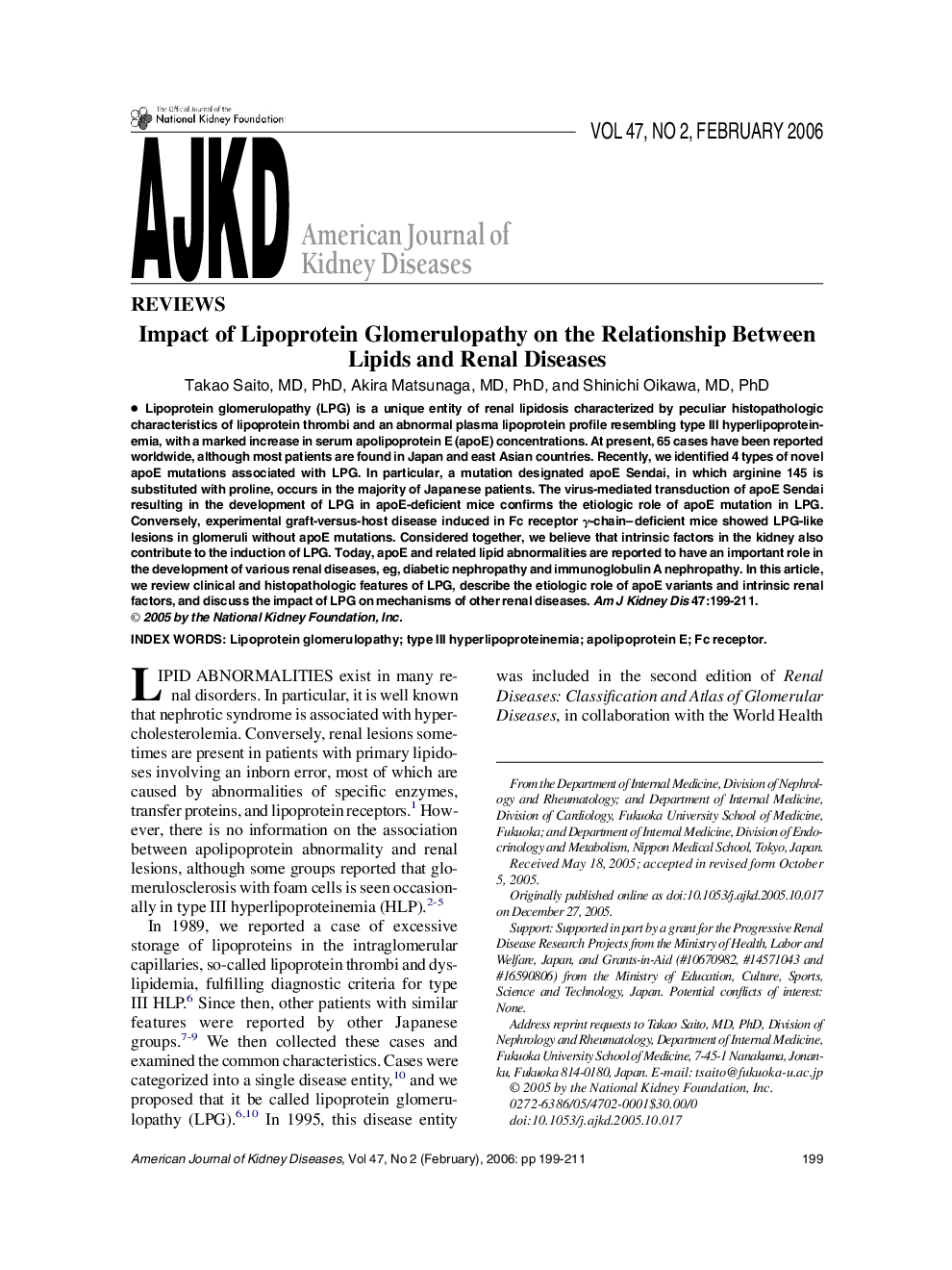| Article ID | Journal | Published Year | Pages | File Type |
|---|---|---|---|---|
| 3850646 | American Journal of Kidney Diseases | 2006 | 13 Pages |
Abstract
Lipoprotein glomerulopathy (LPG) is a unique entity of renal lipidosis characterized by peculiar histopathologic characteristics of lipoprotein thrombi and an abnormal plasma lipoprotein profile resembling type III hyperlipoproteinemia, with a marked increase in serum apolipoprotein E (apoE) concentrations. At present, 65 cases have been reported worldwide, although most patients are found in Japan and east Asian countries. Recently, we identified 4 types of novel apoE mutations associated with LPG. In particular, a mutation designated apoE Sendai, in which arginine 145 is substituted with proline, occurs in the majority of Japanese patients. The virus-mediated transduction of apoE Sendai resulting in the development of LPG in apoE-deficient mice confirms the etiologic role of apoE mutation in LPG. Conversely, experimental graft-versus-host disease induced in Fc receptor γ-chain-deficient mice showed LPG-like lesions in glomeruli without apoE mutations. Considered together, we believe that intrinsic factors in the kidney also contribute to the induction of LPG. Today, apoE and related lipid abnormalities are reported to have an important role in the development of various renal diseases, eg, diabetic nephropathy and immunoglobulin A nephropathy. In this article, we review clinical and histopathologic features of LPG, describe the etiologic role of apoE variants and intrinsic renal factors, and discuss the impact of LPG on mechanisms of other renal diseases.
Related Topics
Health Sciences
Medicine and Dentistry
Nephrology
Authors
Takao MD, PhD, Akira MD, PhD, Shinichi MD, PhD,
